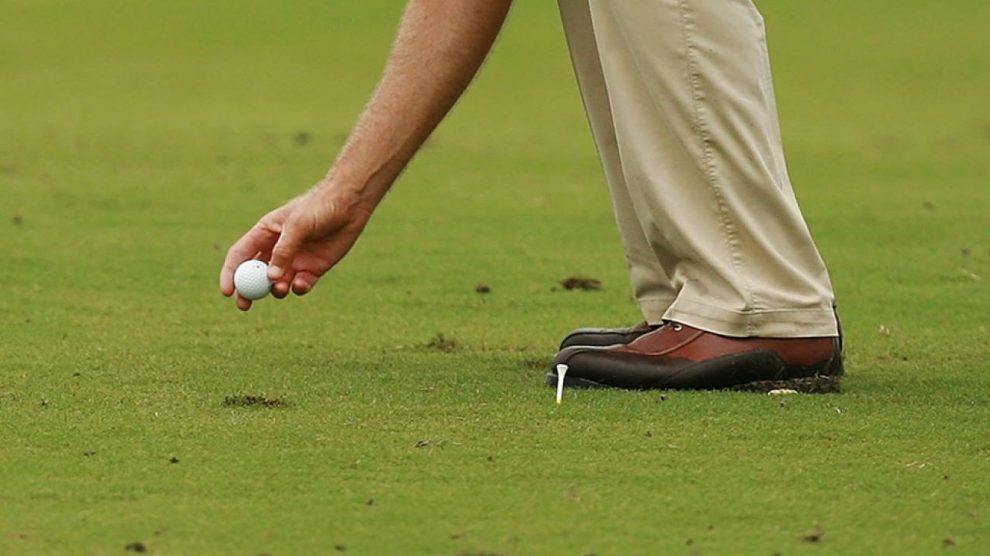When it rains a lot in a golf tournament, tournament officials and the committee will often decide to allow players to play under lift, clean and place rules -- also known as preferred lies on the PGA Tour. The idea with lift, clean and place is to let the field get rewarded for hitting and staying in the fairways instead of potentially penalizing them with a nasty mudball after rain.
Here's how lift, clean and place works (typically): If a golfer is hitting their current shot from a lie in the fairway of the hole they're playing, then they're able to pick up the golf ball (after first marking the original spot with a tee or other marker), clean off the golf ball, then put it back by placing it in a spot within a scorecard's length of the original position.
That wiggle room in which a player can place the ball can sometimes change. Sometimes it's a club. Sometimes it's a different measure. But, typically, a scorecard length, or about 6 inches, is the way to go. In those situations, a player cannot move their ball from one type of lie to another (for example, from the rough to the fairway).
Obviously golfers are allowed to mark and clean golf balls on the putting surfaces, so preferred lies rules don't apply there. Everywhere else on the golf course that isn't the fairway or green of the hole the golfer is currently playing, the golfer has to play the ball down, as it lies, without cleaning or moving it.
Now, a lot of golfers call preferred lies a nickname: lift, clean and cheat. That's because there really is nowhere in the Rules of Golf that explicitly allows preferred lies. So, purists think it's cheating if it's allowed.
In fact, the European Tour goes so far as to say that record scores shot under lift, clean and place rules do not count. In European Tour history, several sub-60 scores have all been shot under preferred lies (or if par is less than 70), so they don't count toward the official record book. That's not true on the PGA Tour, however. If a round is shot under any conditions, the PGA Tour will count it toward their record books.

